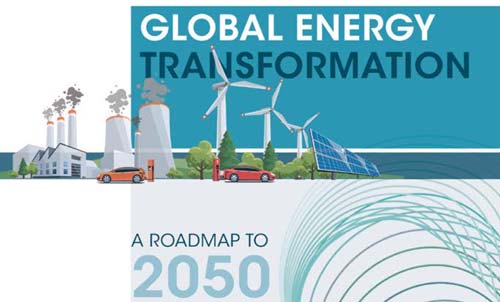Global Energy Transformation Path to 2050
How it Work!
- Register first and log into your account. Study and take the quiz for FREE until passed.
- After passing the quiz, follow the page, pay for the course and print your certificate.
Course Summary:
Renewable energy needs to be scaled up at least six times faster for the world to start to meet the goals set out in the Paris Agreement. The historic climate accord from 2015 seeks, at minimum, to limit average global temperature rise to “well below 2°C” in the present century, compared to pre-industrial levels. Renewables, in combination with rapidly improving energy efficiency, form the cornerstone of a viable climate solution.
Keeping the global temperature rise below 2 degrees Celsius (°C) is technically feasible. It would also be more economically, socially and environmentally beneficial than the path resulting from current plans and policies. However, the global energy system must undergo a profound transformation, from one largely based on fossil fuels to one that enhances efficiency and is based on renewable energy. Such a global energy transformation – seen as the culmination of the “energy transition” that is already happening in many countries can create a world that is more prosperous and inclusive.

Learning Objective:
The student will learn that currently, emission trends are not on track to meet that goal. Government plans still fall far short of emission reduction needs. Under current and planned policies, the world would exhaust its energy-related “carbon budget” (CO2) in under 20 years to keep the global temperate rise to well below 2°C (with 66% probability), while fossil fuels such as oil, natural gas and coal would continue to dominate the global energy mix for decades to come.
To meet the below 2°C goal, immediate action will be crucial. Cumulative emissions must atleast be reduced by a further 470 gigatons (Gt) by 2050 compared to current and planned policies (business-as-usual) to meet that goal.
Course Author
Franco F. Davati, P.E.
Review the quiz before studying the course.Certificate of completion of the course
This course comes with a multiple-choice quiz. You can view the quiz and take the quiz if you are logged in your account. You can take the quiz for this online PDH course as many times until passed. The passing grade is 70% and above. After you pass the quiz simply follow the page, to pay for the course and print your certificate instantly. A copy of the certificate and receipt for this course will always be in your account.Acrobat Reader is required to view this document. Click here to download a free copy of Acrobat Reader.
This online PDH course can also be used as a continuing education course for the following.

